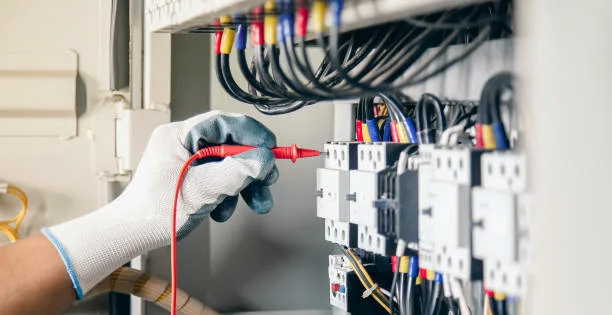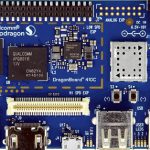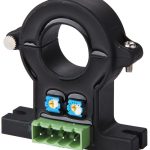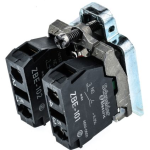
Introduction
Power systems are the lifeblood of modern society, providing electricity to run homes, businesses, and industries. However, these systems are vulnerable to a variety of threats, including electrical and thermal surges–leading to significant damage and downtime. To protect power systems from these devastating disturbances, surge protection is paramount. This article comprehensively outlines the importance of surge protection in power systems, discussing multiple crucial strategies to safeguard electrical infrastructure from unforeseen voltage spikes and thermal stresses.
Understanding Electrical and Thermal Surges: Uncovering Their Causes and Consequences
While electrical and thermal surge protection are often discussed separately, they are interconnected components of a comprehensive power system protection strategy. Electrical surges, also called voltage spikes or transients, refer to sudden, brief increases in voltage within an electrical circuit. These surges can originate from external or internal sources and occur for various reasons, including lightning strikes, switching operations, and equipment faults. While some minor surges go unnoticed, others can be highly destructive, causing equipment damage and downtime.
Thermal or temperature surges are rapid and extreme changes associated with overheating within power system components. These surges can occur in various settings due to excessive current flow, poor connections, or inadequate cooling mechanisms. Prolonged exposure to thermal surges can have devastating consequences–degrading the performance and lifespan of power system components, making them prone to failure.
The Dangers of Electrical and Thermal Surges: Unleashing the Hidden Threats
Electrical and thermal surges significantly threaten power systems and the connected equipment. They can lead to:
- Equipment Damage: Surges can damage sensitive electronic devices, such as computers, appliances, and industrial machinery, leading to costly downtime, repairs, or replacements. Surges can also contribute to equipment failure.
- Data Loss: Surges can corrupt data stored on electronic devices, leading to data loss and potential disruptions to critical operations.
- Fire Hazard: In extreme cases, electrical surges can cause overheating and electrical fires, posing a significant safety risk.
Exploring the Importance of Surge Protection in Power Systems
The primary goal of surge protection in power systems is to prevent damage to sensitive electrical and electronic equipment, ensuring the reliable and consistent operation of the power distribution system. Effective surge protection is of significant importance as it contributes to:
- Equipment Protection – Surge protection devices (SPDs) safeguard sensitive electrical and electronic equipment from voltage spikes. These devices mitigate the detrimental impacts of electrical surges by diverting excessive energy away from the equipment, preventing damage and extending the lifespan of devices.
- Reduced Downtime – Power system failures can lead to costly downtime for multiple businesses and industries. Surge protection helps prevent equipment damage and ensures uninterrupted operation, minimising the financial impact of outages.
- Fire Prevention – Electrical and thermal surges can generate excessive heat, increasing the risk of fires within power systems. Surge protection helps mitigate a bespoke risk by preventing overheating and reducing the potential for electrical fires.
Surge Protection Devices: Shielding Against Electrical Chaos
Surge protection devices are critical power safety components in safeguarding power systems against electrical surges. These devices provide the first-line defense of sensitive components within various facilities and equipment. SPS are indispensable in homes, businesses, data centers, and industrial settings, safeguarding expensive and sensitive electronics from electrical surges and reducing potential losses. The effectiveness of these devices depends on their proper installation and placement within the power system, depending on the environments and power entry points.
Types of Surge Protection Devices: Unveiling Their Broad Range Varieties
There are several types of SPDs, each designed for specific applications and systems, including:
- Transient Voltage Suppressors (TVS): These devices protect low-voltage circuits and electronic equipment by shunting excess voltage to a ground connection.
- Surge Arresters: Also called lightning arresters, they protect buildings and infrastructures against lightning strikes and other external surges. They divert the lightning’s high energy to the ground and prevent it from entering the power system.
- Metal Oxide Varistors (MOVs): MOVs are commonly placed at various points in the power distribution systems to absorb and dissipate surges.
- Gas Discharge Tubes (GDTs): GDTs contain a gas-filled tube that ionises when voltage exceeds a certain threshold, creating a low-impedance path to dissipate the surge energy. They are commonly used in industrial and telecommunications equipment.
- Silicon Avalanche Diodes (SADs): SADs are solid-state devices that protect low-voltage electronic circuits. These diodes respond quickly to transient surges and conduct when subjected to a voltage surge.
- Spark Gaps: Spark gaps are mechanical devices used in high-power applications that ionise and create an air gap between two conductive electrodes. They make a conductive path for the surge energy dissipating during electrical surges.
- Power Conditioners: These devices protect against surges by providing power filtering and conditioning to ensure a stable and clean power supply. They are often used in critical applications such as data centers.
- Combo Surge Protectors: Some surge protection devices combine multiple protection methods into a single unit, offering comprehensive protection for various equipment and systems.
Mitigating Thermal Surges: A Brief Overview of Thermal Protection Measures
Thermal surges, similar to electrical surges, can pose severe threats to electronics. However, their impacts can be easily mitigated using the following measures:
- Temperature Monitoring: Effective thermal surge protection begins with temperature monitoring. Installing temperature sensors and monitoring systems in critical equipment and components can continuously assess temperature levels. Alarms can be triggered when temperatures exceed safe limits, allowing for proactive intervention.
- Load Management: Load management strategies are essential to prevent overloading and subsequent thermal surges. These include load shedding during peak demand periods, proper circuit design, and using protective devices like circuit breakers and fuses.
- Regular Maintenance: Routine maintenance is critical to detect and address potential sources of thermal surges. Inspections, testing, and cleaning of electrical equipment can help identify issues before they lead to overheating and equipment failure.
- Thermal Overload Relays: Thermal overload relays can protect motors and other electrical equipment from overheating. They are designed to monitor the current passing through a device and trip when it detects excessive heat.
- Cooling Systems: Ensuring adequate cooling is essential to thermal surge protection. Proper cooling systems, such as fans or heat sinks, help dissipate excess heat generated within power system components.
Integrated Surge Protection System: A Combined Approach for Power Systems
Integrated surge protection systems are employed to provide comprehensive protection against both electrical and thermal surges. These systems combine various surge protection devices with thermal overload relays and cooling mechanisms. Integrated systems offer a layered approach to surge protection, enhancing the resilience of power systems.
Final Thoughts
Electrical and thermal surges are significant threats to power systems–causing equipment damage, data loss, and safety hazards. Surge protection devices can effectively mitigate electrical and thermal surges, safeguarding your home electronics or maintaining critical industrial uptime. By combining SPDs and integrating crucial protection measures, power systems can operate safely and reliably, ensuring uninterrupted electricity supply for the modern electrical world.





















